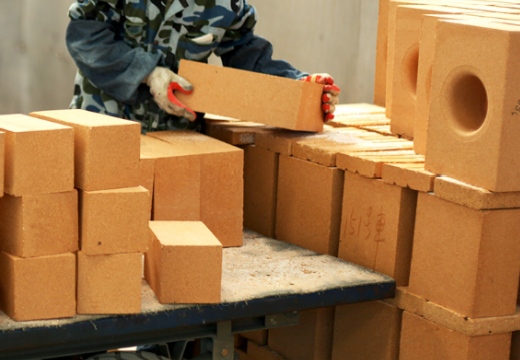What are the common refractory materials?
Currently, the most common classification method for refractory materials is by chemical composition, which includes silica-based, aluminosilicate, magnesia-based, dolomite-based, and carbon composite refractories, among others.
1. Silica Refractories
Silica refractories are materials with SiO₂ as their primary component (SiO₂ mass fraction ≥ 93%). They can be either shaped or unshaped refractories. These materials boast advantages such as high thermal conductivity, a high load softening point, and strong resistance to acidic slag corrosion. However, their major drawback is poor thermal shock stability. Therefore, they are primarily used as structural materials in thermal equipment like coke ovens, glass melting furnaces, acidic steelmaking furnaces, and other high-temperature facilities.
2. Aluminosilicate Refractories
Aluminosilicate refractories are composed mainly of Al₂O₃ and SiO₂. They are categorized by their Al₂O₃ content: semi-silica (15%–30% by mass), fireclay (30%–48% by mass), and high-alumina (>48% by mass). These refractories offer benefits like lightweight, good thermal stability, and insulation properties. However, they start to deform at 1400°C. For this reason, aluminosilicate refractories are generally used as insulating materials in the metallurgical industry rather than in working linings.
Chengdu Firebricks
3. Magnesia Refractories
Magnesia refractories have periclase as their main crystal phase, with MgO mass fraction exceeding 80%. Influenced by the composition of magnesia raw materials, their primary components include MgO, FeO, Fe₂O₃, Al₂O₃, SiO₂, CaO, and Cr₂O₃. With MgO’s melting point reaching 2800°C, magnesia refractories have a refractoriness of up to 2000°C, endowing them with excellent high-temperature resistance. Types of magnesia refractories include magnesia bricks, forsterite refractories, magnesia-alumina spinel refractories, magnesia-chrome refractories, and white magnesia refractories. Among these, magnesia-chrome refractories are made from magnesia sand and chromite, with magnesia sand as the primary component. Compared to traditional magnesia bricks, they exhibit stronger thermal stability and are widely used in non-ferrous metal smelting furnaces. However, due to the severe environmental and health hazards of hexavalent chromium—particularly its serious pollution of water sources—alkaline media and oxygen partial pressure must be strictly controlled during production.
4. Dolomite Refractories
Dolomite refractories are basic refractories primarily made from dolomite, with MgO and CaO as their main components (CaO: 40%–60% by mass; MgO: 30%–40% by mass). They have a refractoriness exceeding 1780°C and an initial load softening temperature of 1550°C at 0.2 MPa, indicating good high-temperature stability. As strongly basic refractories, they resist alkaline slag well but perform poorly against acidic slag. Thus, they are mainly used in open-hearth furnace walls and bottoms, as well as the burning zones of rotary kilns.
5. Carbon Composite Refractories
Also known as carbon-containing refractories, these are multiphase composite materials made from two or more refractory oxides (e.g., MgO, CaO, Al₂O₃, ZrO₂), carbon materials, and non-oxide materials, with carbon serving as the binder. Carbon composite refractories feature high refractoriness, good thermal and electrical conductivity, excellent load deformation temperature, and superior high-temperature strength, slag resistance, and thermal shock resistance. However, they are prone to oxidation. Consequently, they are primarily used in smelting stainless steel, clean steel, low-sulfur steel, and other steel grades.
 What are the common refractory materials?
What are the common refractory materials?

